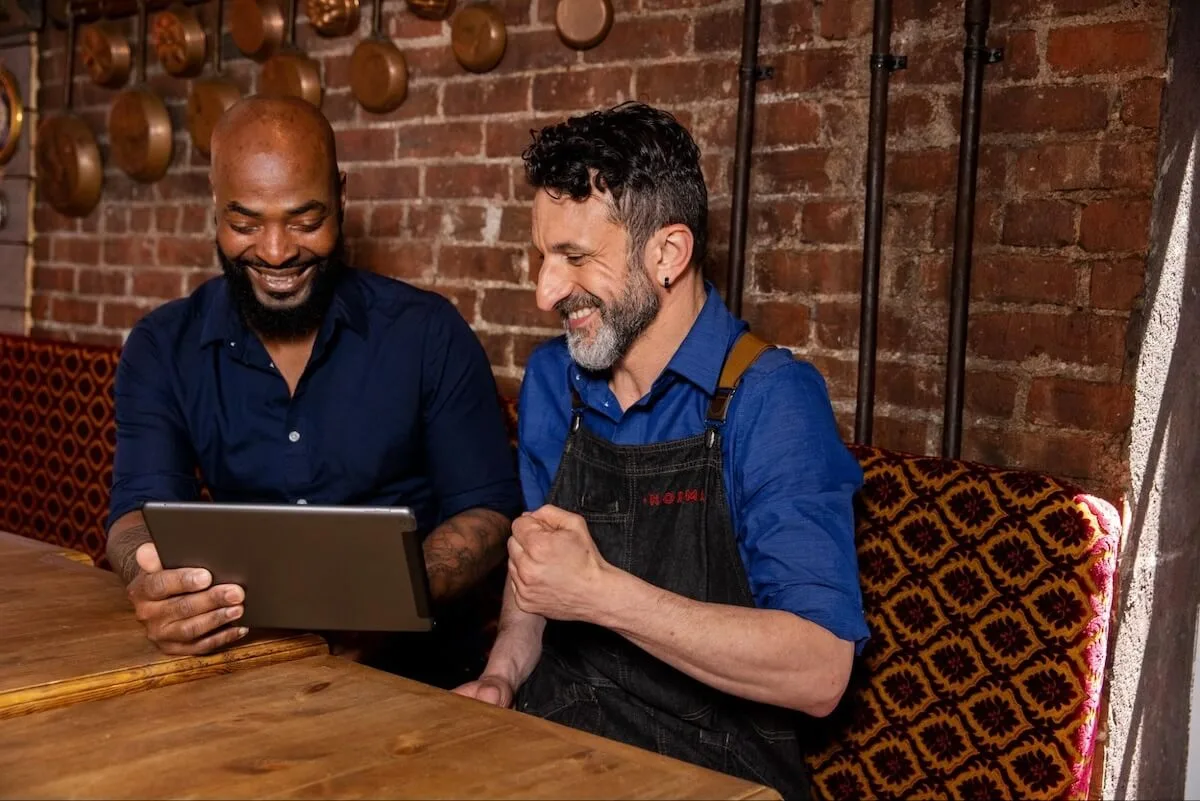How to handle customer complaints: Planning and prevention
Skip the article and turn takeaways into action by scheduling a call with our team.
If you’re in the restaurant business, you can be sure you’ll need to handle customer complaints at some point. Inevitably, a customer will have a negative experience and let you or someone in your organization know about it. These complaints come in all shapes and sizes, and can be delivered in a number of different ways. They can also be legitimate or illegitimate, and using discernment is key in handling complaints well.
Unhappy customers are guaranteed at some point even for the best restaurants, but that’s not necessarily a negative. Handling complaints well can lead to continuous improvement. Resolving complaints can bring improved customer satisfaction, better trained team members, and more effective processes. You can even turn unhappy customers into loyal customers if done right. Think of it like verbal Judo.
So let’s look at strategies for how to handle customer complaints, as well as some of the more common complaints customers have. Odds are, you’ve already experienced these no matter what side of the conversation you’ve been on.
How to handle customer complaints in person

Since perfection is impossible, any restaurant will end up with complaints about a negative customer experience—and it’ll be delivered in person. Often, the first line of defense against these complaints are front-of-house (FOH) staff, who need to be prepared for such complaints.
Most importantly, staff need to remain calm when dealing with upset customers—especially when the customer is not. Responding to anger or frustration calmly helps defuse situations and is a key aspect of complaint management.
It’s best to deal with reasonable, minor complaints by handling them immediately. Here’s a straightforward process for a three-part sincere apology, plus a follow up:
- Practice active listening and acknowledge the root cause of the problem. “I’m sorry there was a fly in your soup.”
- Show empathy and understanding of the problem. “I wouldn’t want a fly in my soup, either.”
- Practice restitution or compensation. “Would you like a new bowl of soup on us? The last one is on us too.” Keep compensation costs low, since overdoing this practice can ruin a business.
- Follow up with the customer, either in person or ask for their contact information. Ensure that the customer’s needs have been met and communication has been clear.
This usually works well to calm angry customers, and can be applied in many forms, depending on the situation. Staff should feel empowered to rectify complaints on the spot without having to get a manager involved so things can be resolved quickly.
However, keep in mind that this is a solution for reasonable complaints. Sometimes customer complaints are unreasonable—either intentionally or unintentionally. Servers, managers, and restaurant owners alike need to be flexible, but not to the point of being pushovers. It’s a fine line to walk.
Setting clear policies

Wise restaurateurs will develop a training program that teaches staff and management how to handle customer complaints of all kinds. These policies should be written down to ensure no confusion at any level—which will keep staff calm and improve the resolution process.
A good place to start is looking at common complaints from customers and detailing them in a training manual, like an FAQ. Common complaints include:
Wrong orders
Clearly wrong orders should be replaced immediately with a sincere apology. Depending on the gravity of the error, some restaurants may be inclined to comp the meal, offer a discount, or provide a free drink or dessert as compensation.
Slow service
Customers that wait a long time to be seated or served can become reasonably upset. Begin with an apology and explanation, and escalate from there as necessary.
Improperly cooked or otherwise inedible food
Food that’s clearly been done wrong (undercooked chicken, for example) needs to be immediately rectified and the customer given a new dish. As with wrong orders, the gravity of the error will determine the compensation necessary.
Unhappy with food
If the food was cooked correctly but the customer simply didn’t like it, there’s not much to be done. Staff can practice active listening and show empathy, but not liking a dish doesn’t entitle anyone to free food.
Pricing
Customers will sometimes complain about the price of a dish after it’s been ordered—maybe it’s smaller than they expected, for example. Staff must stand their ground on this complaint while listening patiently, since pricing is set at the managerial level and reflects costs the customer may not understand.
Billing errors
Any billing errors must be immediately rectified. An apology from the manager may be necessary depending how large the error is. Using digital point of sale (POS) systems minimizes the odds of billing errors.
Noisy environment
Some customers are more sensitive to noise than others, and may complain the music is too loud for example. Staff will need to discuss complaints about noise or restaurant entertainment with management if it’s a common issue—simply turning the music down can be an easy fix.
Unclean environment
If a customer points out that the restaurant is dirty, FOH staff should take such complaints seriously, as long as they’re reasonable. Seeing a cockroach or mouse can be a major turnoff, for example, as can stains on furniture or poorly cleaned tables. If these complaints are common, it may be time for a deep clean or pest control.
Food poisoning
Food poisoning is a very serious complaint, and one that must be handled delicately by FOH staff. While it’s important to listen to the complaint and acknowledge it’s been received, staff must not admit fault as it can open the path to lawsuits (frivolous or not). These complaints need to be immediately passed on to management.
Complaints vs customer feedback

Not all negative feedback is a complaint. Sometimes, the negative feedback comes as legitimate criticism and is offered in good faith as a way to improve the service experience. Treat this kind of feedback as gold and thank customers for providing it.
However, many customers will be reluctant to offer such feedback. To encourage it, provide a QR code on tables with a link to an anonymous feedback page. This can elicit truth that might not otherwise come out. Customer expectations aren’t always clearly understood by new restaurants, for example, and learning what improvements diners want can go a long way towards improving customer retention.
Preventing complaints

Far better than handling customer complaints is preventing them in the first place. Developing clear workflows, training your customer service team, and providing excellent customer service are all deterrents to complaints in the first place. Using the latest tech in tableside ordering and payment processing, for example, can prevent errors in ordering and billing while expediting service. This in turn can lead to shorter wait times and more efficient service.
Using top-of-the-line FOH tools like Yelp Guest Manager is an excellent way to improve customer service all around and prevent complaints. It gives staff the tools they need to do their job well while making customer interactions, like reservations and joining waitlists, a cinch.
Want to see what it can do for you and how it can keep customers happy? Reach out to us for a free demo. If your customers are happy, we’re happy.